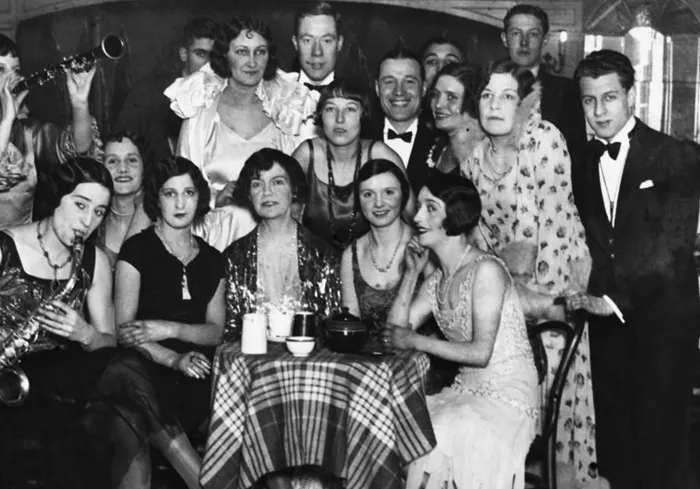Bay Area novelist Kirsten Mickelwait’s latest historical novel, The Ashtrays are Full and the Glasses are Empty, reintroduces the captivating yet overlooked figure of Sara Wiborg Murphy, a muse of the Lost Generation. The novel, published by Koehler Books, illuminates Murphy’s role in shaping the cultural landscape of the 1920s, an era dominated by literary titans like Ernest Hemingway, F. Scott Fitzgerald, and Gertrude Stein.
Mickelwait’s book explores the life of Murphy, a woman whose connections with some of the most famous figures of the Jazz Age were overshadowed by history. A former model and socialite, Sara Wiborg Murphy was a key figure in the artistic circles of New York, Paris, and Antibes, inspiring creativity in writers, musicians, and painters. However, her story, much like that of her husband, Gerald Murphy, has long been relegated to the margins of literary history.
Mickelwait will discuss The Ashtrays are Full and the Glasses are Empty during a talk at Corte Madera’s Book Passage on May 28.
A Rediscovered Muse
Mickelwait’s interest in Sara Murphy began decades ago, when she first encountered the biography Living Well is the Best Revenge in 1973. “I was a college sophomore reading about Sara and Gerald Murphy in a literature class on the Lost Generation,” she recalls. “While Hemingway and Fitzgerald captured the limelight, the Murphys quietly embodied the essence of what the era was about—creating beauty in friendship, love, and art.”
In Mickelwait’s novel, readers are transported through the glamorous world of high society, following Sara Murphy from the lavish salons of New York to the bohemian haven of Paris and the picturesque French Riviera. Amidst the glitter and glamour, however, the novel also reveals the personal and societal struggles that would define the end of the Jazz Age. As the Great Depression looms and personal tragedies mount, Mickelwait traces the collapse of the world the Murphys helped create.
“I wanted to show the full arc of Sara’s story,” Mickelwait says, noting the striking parallels between the challenges of the 1920s and those of today, including a global pandemic and economic instability. “Time has a way of repeating itself, and the themes of resilience and reinvention resonate more than ever.”
From Memoir to Fiction
While Mickelwait’s previous work, the memoir The Ghost Marriage, chronicled her own life and struggles, The Ashtrays are Full and the Glasses are Empty marks her first venture into historical fiction. “With memoir, the challenge is sticking to the facts of your life, but fiction allows you to imagine entire worlds and characters. For me, the emotional truth of Sara’s journey was the key to telling her story,” Mickelwait explains.
Her decision to fictionalize elements of the Murphys’ lives wasn’t without risk, but it was one that allowed her to explore emotional and narrative complexities. “Rather than creating alternate plots, I used fiction to dive deeper into the emotional truths of their lives,” she says.
For example, Mickelwait chose to definitively portray Gerald Murphy as gay, a topic that many biographies have only hinted at. “His identity as a gay man wasn’t just a private matter; it had a profound impact on his relationship with Sara. The tension that arose from this gave their marriage a complex, bittersweet depth,” she notes.
The ‘Party’s Over’ Theme
The novel’s title, The Ashtrays are Full and the Glasses are Empty, draws from a famous line by Zelda Fitzgerald, encapsulating the sense of disillusionment that followed the abrupt end of the Jazz Age. Yet, Mickelwait’s novel also emphasizes resilience in the face of hardship. She sees Sara Murphy as a figure who, like many women, navigated profound loss and reinvention.
“The theme of surviving a golden life’s collapse is one I relate to personally,” Mickelwait confesses. “But just as Sara’s life wasn’t defined by her fall from grace, neither is mine. There’s always the possibility of rebuilding and reclaiming your sense of self.”
Through Sara Murphy’s story, Mickelwait underscores how personal trials—whether they stem from love, loss, or the weight of societal expectations—offer profound opportunities for growth and reinvention.
A Connection to Her Own Life
In the process of writing The Ashtrays are Full and the Glasses are Empty, Mickelwait began to notice striking similarities between Gerald Murphy’s eccentric passion for costumes and that of her own ex-husband. “Gerald loved to dress up in elaborate costumes, and strangely, my ex-husband did too. It was only after the book had gone through edits that I realized this unexpected parallel,” she recalls.
This blend of history and personal resonance creates a narrative that feels both timely and timeless. For Mickelwait, the novel is more than just a historical retelling; it’s an exploration of universal themes of love, loss, and the potential for reinvention.
Through The Ashtrays are Full and the Glasses are Empty, Mickelwait has not only revived the forgotten story of Sara Wiborg Murphy but has also created a compelling narrative about resilience and the power of reclaiming one’s story. The novel serves as a reminder that while the party of the Jazz Age may be over, its echoes are still being heard today.
Mickelwait will be in conversation with Nina Schuyler at 6 p.m. on Wednesday, May 28, at Book Passage, 51 Tamal Vista Blvd., Corte Madera.

